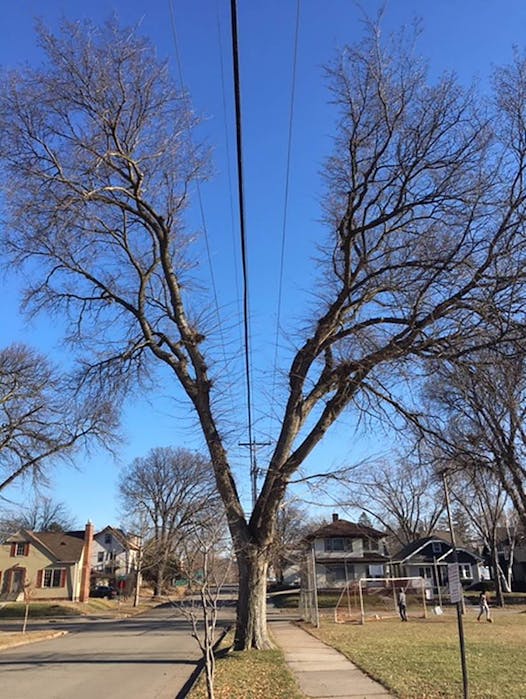Why does Minneapolis keep planting trees under power lines?
Listen and subscribe to our podcast: Via Apple Podcasts | Spotify | Stitcher
For years Rick Polenek has walked around his Minneapolis neighborhood and noticed big trees with odd, V-shaped gaps through the branches.
They were planted under power lines by the city, a decision by planners who had to know the trees would eventually need pruning, he said.
So Polenek turned to Curious Minnesota, the Star Tribune's community-driven reporting project fueled by questions from readers.
"I understand the trees still provide some shade, but it's unsightly to me," he said. "It just seems like a waste of a good tree when they have to lop off the tops."
The trees Polenek saw were at least 20 years old. In 2000, the city changed its approach to tree planting near power lines when it had to replace thousands of diseased elms. Part of the reforestation plan included an agreement with the former Northern States Power Co. to bury all power lines underground, but that never happened, said Ralph Sievert, director of forestry for the Minneapolis Park and Recreation Board.
Since then, tree varieties under 30 feet tall are planted beneath power lines and larger trees are placed in open spaces, he said. This is happening as the city replaces different types of trees on each block because of emerald ash borer damage.
"Before the utility industry changed its pruning techniques, trees that grew straight up like ginkgos would literally have their tops cut off," he said. "Making the 'V' trims, it gives the tree to grow in a different direction and still provide canopy. People still don't like to see it pruned down because it is dramatic."
Fortunately for Minneapolis, many power lines are in alleys with no trees. The city plants about 9,000 trees each year at a cost of $105 each.
While Xcel Energy and other utilities are responsible for trees under power lines, Xcel's website includes a guide for residents who want to plant trees near lines. Keeping branches away from power lines ensures the safety and reliability of the electrical grid, said Xcel Energy spokesman Matt Lindstrom.
Trees are inspected every five years to see if they need pruning, Lindstrom said. Workers follow national standards to safely allow power lines and trees to coexist.
The cost of this work is included in the approved rates in Minnesota, he said. This includes all proactive and reactive maintenance necessary near Xcel transmission and distribution lines, where the company inspects millions of trees annually, he said. Xcel also does clean-up work after power outages.
Lindstrom said Xcel experiences about 4,000 tree-related outages per year. These include singular and larger outages related to storm events.
"We understand that tree pruning or tree removal is not always popular, and we know how much people love Minneapolis' tree canopy," he said. "But when we make the decision to prune or remove them, it's done in the name safety and keeping the lights on for our customers."
If you'd like to submit a Curious Minnesota question, fill out the form below:
Read more Curious Minnesota stories:
Minneapolis plows its alleyways. Why doesn't St. Paul?
Are motorcycles allowed to be louder than cars in Minnesota?
Do the Twin Cities really get their drinking water from the Mississippi River?
Did German POWs really work on Minnesota farms during World War II?
What was the most destructive tornado in Minnesota history?
Who decides when the I-35W bridge is lit in color, and how is it done?
Why do some major Twin Cities highways not connect directly?
Why is Minnesota more liberal than its neighboring states?



